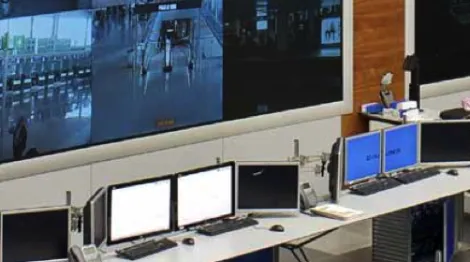How Can Cloud Solutions Help the Industry?
Cloud Computing solutions for the industry facilitate keeping up with technological trends and help organizations face internal and external forces and succeed: We highlight 6 internal and external fo...

Today, organizations face different macroeconomic, technological, and market challenges. that can significantly influence the the course of their stability and continuity. Cloud Computing solutions for the industry facilitate keeping up with technological trends and help organizations face internal and external forces and succeed, regardless of whether they are economic, social, or performance and operational forces.
We could highlight 6 internal and external forces that organizations may currently face, highlighting how Cloud solutions allow them to extract competitive advantages.
- Economic environment. The crisis and competition in today’s globalized markets force organizations to reduce their profit margins. Cloud Computing-based solutions allow reducing IT infrastructures, maintenance, and the cost of their life cycles. These solutions can reduce costs and times, increasing collaboration and reducing time-to-market.
- Globalized markets: collaboration with suppliers. Organizations can increase their efficiency and performance through collaboration and integration with their suppliers, but this implies controlling and sharing information that may be confidential. With Cloud solutions, it would not be necessary to provide access to the internal information systems of the organizations, but simply share the information relevant to the collaboration in Cloud solutions.
- Reduce vulnerabilities and keep cyber systems secure: Organizations must ensure that their systems are always updated and patched to guarantee security. Through Cloud Computing-based solutions, organizations will have their systems updated with the latest patches and service packs, as this is one of the functionalities provided by Cloud solutions such as Infrastructure as a Service (IaaS) and Software as a Service (SaaS).
- The new generations: The new additions to organizations are those born between 1980 and 2000, the so-called digital generation. This implies that organizations must redesign their work environment, for example, the use of smartphones or tablets in industrial management, supervision, and control environments, or the availability of data to perform analysis remotely.
- Cloud Computing solutions provide access to data from geographically distributed remote sites, facilitating real-time access and enabling collaboration between different locations.
- Big Data: The emergence of industrial equipment that bases its communications on Ethernet has exponentially increased the volume of data generated by systems, applications, and devices. The capture, aggregation, analysis, and storage of these data is known as Big Data, and organizations are aware that this type of information must be accessible to the right person, at the right time, in a simple and fast way. CloudComputing-based solutions can manage, store, and analyze Big Data. This type of solution keeps data secure while simultaneously making it more accessible.
- Invest thinking: about the future Organizations usually must justify each capital investment they make through its return (ROI) to ensure the return of invested capital. Cloud Computing-based solutions use hardware that is managed, monitored, and maintained by the service provider, so its depreciation and return on investment are their responsibility. Capital expenditures are replaced by small and predictable annual subscriptions that can be readjusted at any time.






